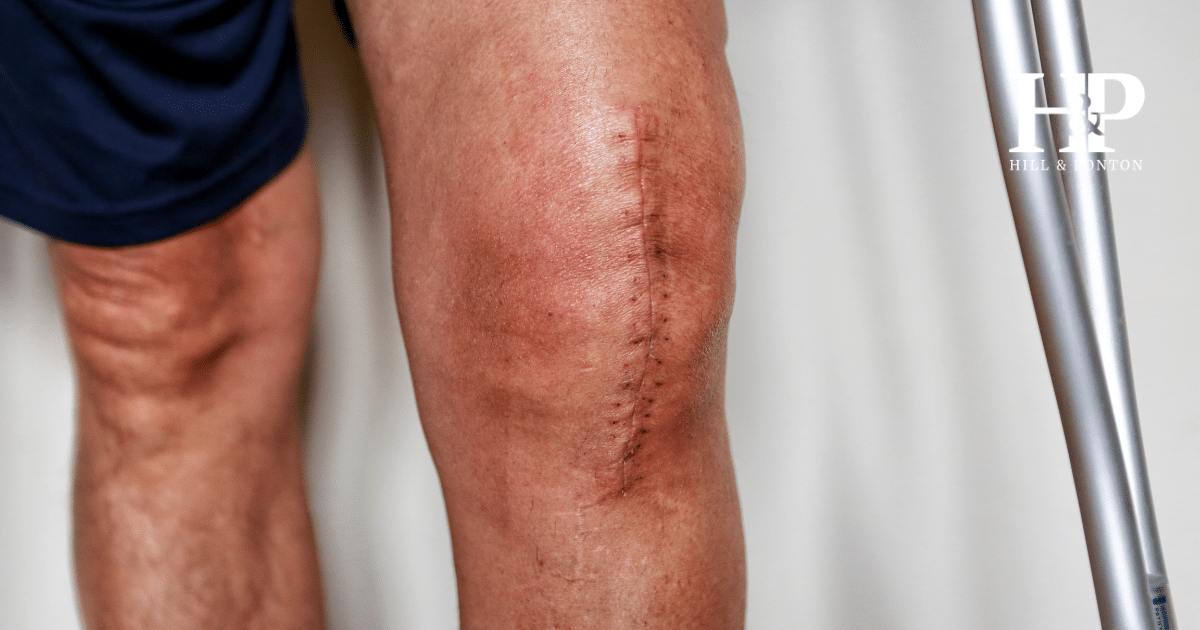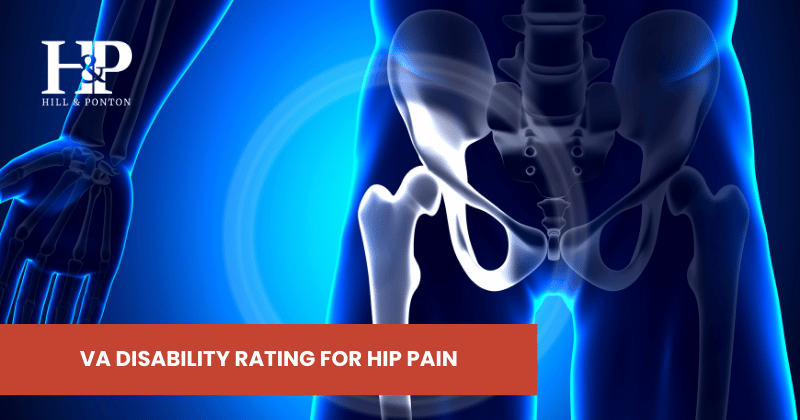Can I Get VA Disability Compensation for Scars and Burns?
Yes, you may qualify for VA disability compensation due to scarring – depending on the severity and location of your scars.
In fact, as of this writing, scars are the sixth most common service-connected disability, according to the Department of Veterans Affairs, and the Administration is paying disability benefits to more than a million veterans.
According to the 2019 VA Benefits Report, Scars are the sixth most common service-connected disability for new disability compensation recipients, according to the VA, affecting more than a million veterans.
Burn scars are accounted for separately. More than 65,000 veterans are currently receiving disability compensation for burn scars, according to the same Department of Veterans Affairs report.
All told, scars account for about 3.8 percent of all disability recipients. Among Global War on Terror (GWOT) veterans, general scars burns account for 3.6% of all VA compensation recipients, affecting 375,166 people. 59,165 of them are women, according to the VA.
How much disability compensation will scarring qualify for?
To qualify for disability compensation, you must have at least one scar that is unstable, painful, or both. In a nutshell, the VA’s disability rating criteria for scars is based on multiple factors:
- Pain
- Stability
- Size – based on the total area of scar tissue
- Shape – linear vs. non-linear
- Affected areas of the body
- Limitation of motion
- Deepness or superficiality – A deep scar adheres to underlying tissues; a superficial scar is not associated with underlying tissue loss.
The amount you may receive for general scarring depends on several factors. Your VA doctors will evaluate your scarring in accordance with 38 CFR §4.118, diagnostic codes 7800-7805. These provide an objective rubric for VA medical and benefits officials.
If you have significant scarring, the VA will assign a rating between 0% and 80%, with 100% being the most disabling (and qualifying for the highest monthly income benefit). If the medical evidence shows a functional or motion impairment, you may receive additional benefits.
Two Scar Ratings Systems Explained
Many veterans are confused when they encounter the VA scar grading system for the first time. This is because the VA actually superimposes two distinct ratings systems, and overlays them against one another.
The first system looks at the condition of the scar itself. The second, characteristics of disfigurement, looks at the disfiguring effects of the scarring. Additionally, the scars may themselves cause other conditions which could make you eligible for further VA disability compensation.
For example, if scar tissue on your elbow makes it impossible for you to fully flex your arm, that would be considered a limitation of function, as well as a limitation of motion.
It may also affect your employability. This could qualify you for additional benefits, based on your scars’ disabling effects.
If scar tissue affects your vision – for example – if the scarring results in the loss of both eyes, you may qualify for a combined rating for both your scarring and your vision loss.
Scarring and Characteristics of disfigurement
To standardize its rating decisions, the VA has defined eight characteristics of disfigurement.
The more characteristics of disfigurement you have, the higher the disability rating you may receive.
To understand the VA rating system, you should familiarize yourself with the eight characteristics of disfigurement:
- Scar length > 5 inches
- Scar width of one-quarter inch or more at the widest point (linear scars)
- The surface contour of scar elevates or depresses when pressed
- Scar sticks to soft tissue beneath
- Changes in skin color in a 6-square inch area or greater
- Abnormal skin texture (irregular, atrophic, shiny, or scaly, etc.), over a total area of 6-square-inches area or more
- A total area of 6 square inches or more of missing soft tissue beneath the scar
- Inflexible and hardened (indurated) skin in a 6-square-inch area or greater.
Note that scars must be at least six square inches in size in order to meet the criteria for some of these characteristics.
Does the location of the scarring matter?
The location of your scarring makes a great deal of difference when it comes to your VA disability rating.
As you would expect, scarring to the head, face and neck qualify for higher disability ratings than scars on your torso or extremities.
Scars may be stable or unstable. According to VA criteria, an unstable scar is one for which “there is frequent loss of covering of skin.”
What Is the VA Rating for Scars?
The VA scar rating is 10%, 20%, 30%, 40%, 50% or 80%, depending on the number of scars, their size, and whether they are disfiguring the face, head or neck.
- 10% rating – One or two scars that are painful or that are unstable; Total area of areas of scar tissue totaling at least 6 square inches but less than 12 square inches; Scars not on the head, face, or neck, which are superficial in nature and not associated with underlying soft tissue damage, affecting a total area of less than 144 square inches of skin.
- 20% rating – Three or four scars that are painful and/or unstable; Non-linear and deep scarring in areas other than the head, face or neck, affecting a total area of at least 12 square inches but less than 72 square inches.
- 30% rating – Five or more unstable or painful scars; Non-linear and deep scarring not on the head, face or neck, affecting a total area of least 72 square inches but less than 144 square inches; see also below the 30% rating for scars on the head
- 40% rating – Non-linear and deep scarring not on the head, face or neck, affecting 144 square inches or more.
The VA Rating for Scars on the Face is 30%, 50% or 80%
- 30% rating to scars or disfigurement of the head, face and neck for: Visible tissue loss, or tissue loss detectable by palpation; Gross distortion or asymmetry of two features or paired sets of features (nose, chin, forehead, eyes (including eyelids), ears (auricles), cheeks, lips); 2-3 characteristics of disfigurement or more.
- 50% rating to scars or disfigurement of the head, face and neck for: Visible tissue loss, or tissue loss detectable by palpation; Gross distortion or asymmetry of two features or paired sets of features (nose, chin, forehead, eyes (including eyelids), ears (auricles), cheeks, lips); 4-5 characteristics of disfigurement or more.
- 80% rating to scars or disfigurement of the head, face and neck for: Visible tissue loss, or tissue loss detectable by palpation; Gross distortion or asymmetry of two features or paired sets of features (nose, chin, forehead, eyes (including eyelids), ears (auricles), cheeks, lips); 6 characteristics of disfigurement or more.
Are separate ratings possible for scars?
If you have multiple separate areas with scarring, your VA examining physician may apply a combined rating.
So if you have a significant scar on your left leg that qualifies you for a 20% disability rating, and another scar on your right arm that also separately qualifies for a 20% disability rating or perhaps service connected razor bumps (pseudofolliculitis barbae), your doctor may combine them together and you could receive a 40% rating.
However, if both scars are on the same leg, for example, you would only receive the greater rating of the two scars.
Put another way, multiple scars on the same area of your body would not combine to create a higher disability rating. But they would if they were spread out over multiple areas of your body.
However, even if you have multiple scars on one area of your body, the entire scarred surface area can combine to count toward the total area requirement to meet VA criteria.
Service connection for Scars
You must be able to show that the scar itself has a service connection. If you serve or served in the Reserve component of the U.S. Armed Forces, you will need to show that you incurred the scar in the line of duty. If you served on active duty, you won’t necessarily have to have an LOD investigation.
If you believe your VA rating for scars was wrongly denied or undervalued, a VA disability attorney can help. At Hill & Ponton, we have successfully assisted thousands of veterans in securing the benefits they deserve.
For a free, confidential, no-obligation case evaluation, contact us today →




